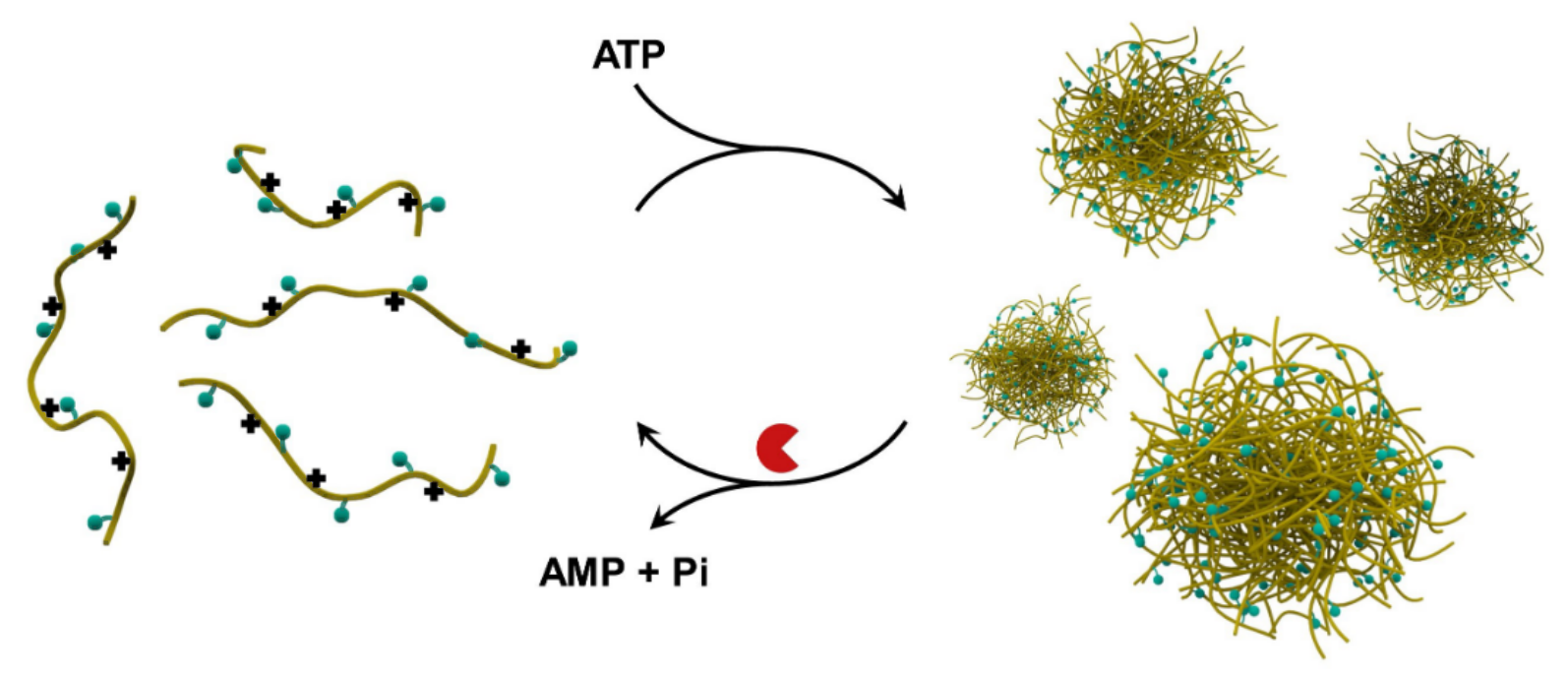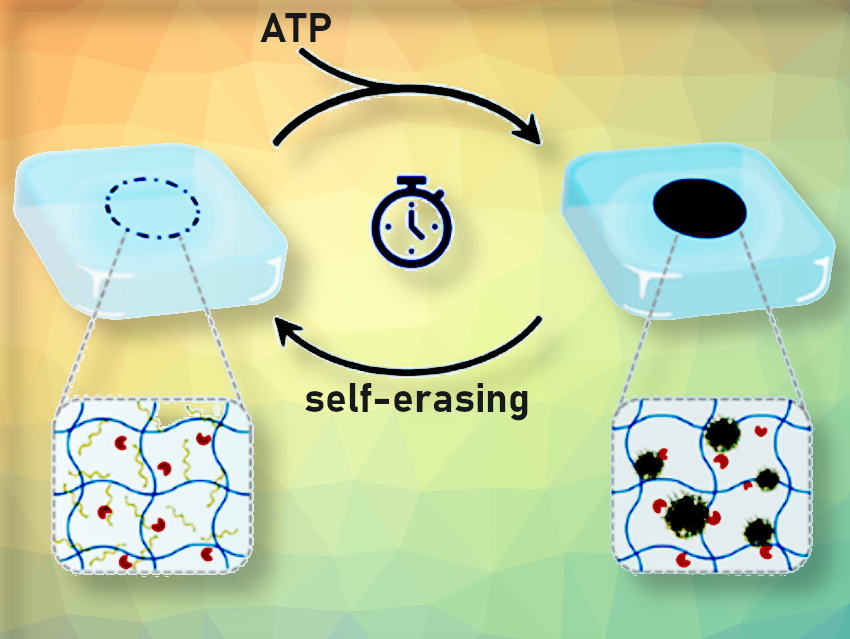Chemical fuel-driven non-equilibrium systems are prevalent in nature, such as in the development of cytoskeletal networks. To mimic these natural systems, researchers have used synthetic molecules as building blocks for non-equilibrium self-assembled systems. However, the number of synthetic molecules available for non-equilibrium systems remains limited, and their preparation can be costly and time-consuming.
Yunfeng Li, Jilin University, P. R. China, and colleagues have developed an adenosine triphosphate (ATP)-driven non-equilibrium self-assembly system based on chitosan derivatives that enabled the creation of self-erasing patterns for communication security in a spatiotemporally programmable manner.
To construct the non-equilibrium self-assembly system, the team used natural polymers, chitosan derivatives, as building blocks, which are low cost and abundant sources (pictured below). Lactobionic acid (LA) and hydroxy (polyethylene glycol) carboxylic acid (PEG-COOH) were used to chemically modify chitosan to make it soluble in water. ATP was used as the chemical fuel and ATP hydrolase, potato apyrase, was used as the fuel-consuming molecule.
As the potato apyrase gradually hydrolyzes ATP, the nanoparticles are gradually degraded and eventually the whole system is restored to its original state. By constantly replenishing ATP, the non-equilibrium self-assembly of nanoparticles can be carried out through successive cycles. The researchers were able to obtain at least 23 cycles of non-equilibrium self-assembly of polymer nanoparticles by refueling the system with ATP. The lifetimes of the transient nanoparticles were controlled by adjusting the concentrations of the components, ranging from several minutes to hundreds of minutes.

The formation and disappearance of the transient nanoparticles led to a sharp change in the turbidity of the solution. By integrating the non-equilibrium self-assembly system into a polyacrylamide hydrogel, the researchers achieved self-erasable patterns for communication security. They achieved time-encoded security labels with self-erasing and rewritable functions by adjusting the opaqueness time of the self-erasing material. They pre-programmed patterns corresponding to the International Morse code in the hydrogel to achieve further encryption of information in a spatiotemporally programmable manner.
- Transient biomacromolecular nanoparticles for labels with self‐erasable and rewritable ability,
Jiahui Li, Liang Wang, Chunyu Pan, Bai Yang, Yunfeng Li,
ChemSystemsChem 2023.
https://doi.org/10.1002/syst.202200036



